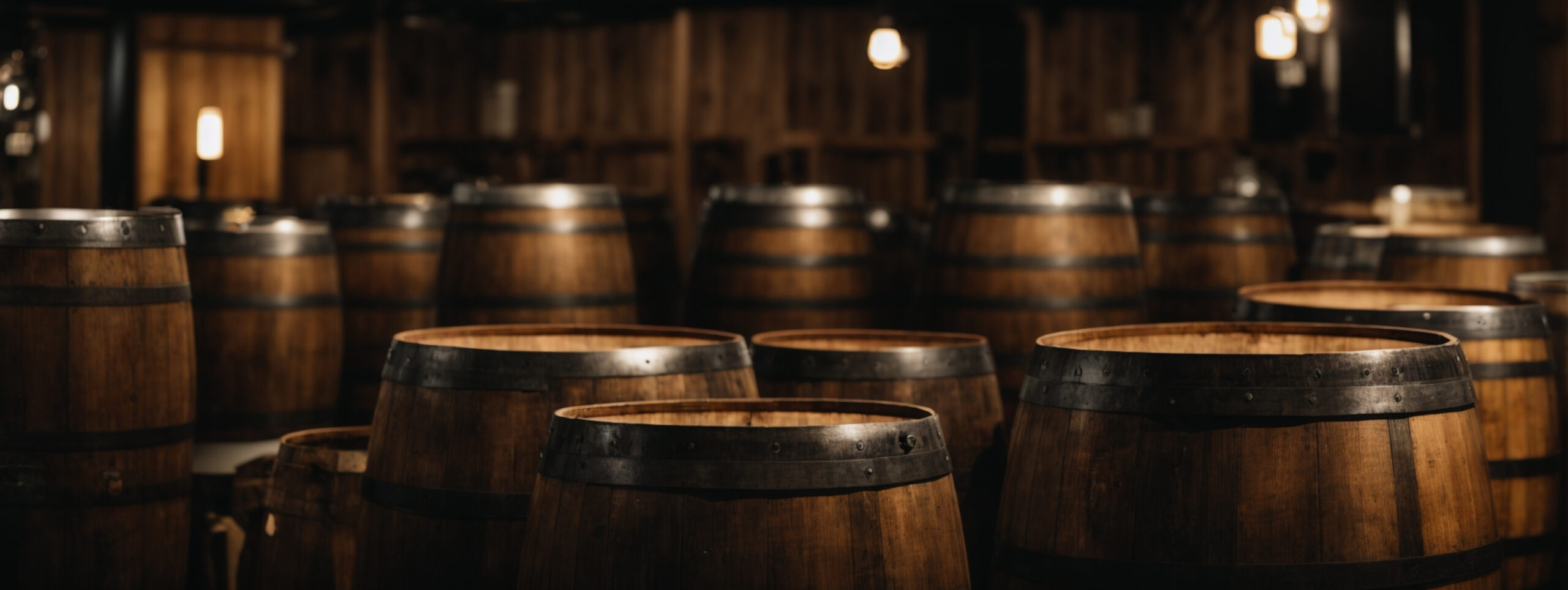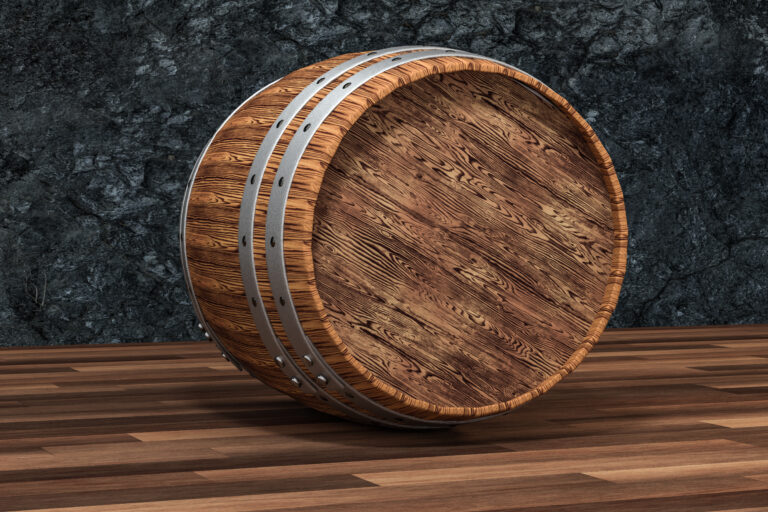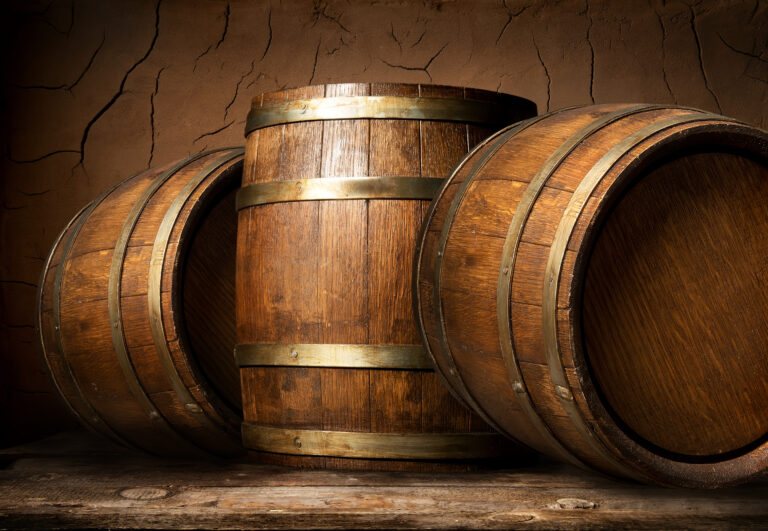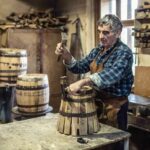Whiskey lovers, gather ’round! We all cherish that golden elixir, sipped neat or on the rocks, reveling in the deep, intricate flavors that only time in a charred oak barrel can bestow. But hold your drams, because the world of spirits is brewing up something new. Technology is shaking up age-old traditions, with distillers bravely venturing into the realm of synthetic barrel alternatives. These innovative methods promise to accelerate aging and conjure up truly unique flavor profiles.
As a devoted whiskey connoisseur, the thought of change can feel a bit unsettling. After all, oak barrels have been the silent partners in whiskey maturation for centuries, patiently mellowing and flavoring our beloved spirit. Yet, many see a tantalizing opportunity in these new approaches and wood alternatives. Some are on a mission to speed up aging from years to mere months, while others are keen to craft whiskeys with flavors that stand distinctly apart from their barrel-aged brethren.
Now, synthetic barrels are certainly a hot topic, sparking lively debate in the whiskey world. But for the adventurous among us, this opens up a whole new universe of whiskey flavors to explore in your glass. The future of whiskey aging is knocking – are you ready to take a sip? While traditionalists might cling to their beloved barrels, let’s remember that whiskey itself is an incredibly innovative spirit. This fascinating battle between technology and tradition makes it an exhilarating time for both whiskey aficionados and distillers alike.
The Enduring Legacy of Oak Barrel Aging for Whiskey
The time-honored practice of aging whiskey in charred oak barrels has been the bedrock of its production for centuries. These oak barrels are truly magical, imbuing the distilled spirit with both delightful flavor and inviting color during its extended nap. However, as we’ve noted, some distillers are now venturing into the unknown, experimenting with synthetic alternatives to speed up the aging process.
For generations, distillers have meticulously crafted whiskey from fermented grains like barley, rye, or corn. The true transformation, however, happens when this distilled spirit is laid to rest in charred oak barrels. Here, the oak generously imparts signature vanilla and caramel notes as the whiskey slowly interacts with the wood. Generally, the longer a whiskey ages, the smoother and more nuanced its flavor profile becomes.
You’ll often see premium whiskey labels proudly display the number of years their spirit has aged, with 12 to 18 years often hailed as the pinnacle of quality. But here’s the rub: during this long aging journey, a significant amount of whiskey can evaporate – a phenomenon lovingly dubbed the “angel’s share.” This lengthy process also ties up valuable inventory and significantly slows down whiskey production.
The Ascent of Synthetic Alternatives: A New Era for Whiskey
To accelerate whiskey production, a number of distillers are actively experimenting with synthetic barrels and innovative barrel inserts made from wood staves and chips. The goal? To dramatically speed up aging. Others are exploring even more cutting-edge techniques, utilizing ultrasound waves, calculated temperature changes, or simply wood chips to infuse those desired wood flavors in a matter of days or weeks, rather than years.
While some view these modern aging methods as a natural and inevitable progression in the spirits industry, traditionalists vehemently argue that truly premium whiskey can only be achieved through the venerable process of lengthy barrel aging. There’s a healthy dose of skepticism about whether rapid aging or synthetic aging can truly replicate the profound depth of flavor and exquisite smoothness that comes from a long, patient slumber in a traditional barrel.
Only time, and perhaps a discerning palate, will tell whether these new technologies will usher in a new era of reasonably priced, synthetic alternatives to traditionally aged premium whiskeys. The future of whiskey aging is undeniably unfolding before our eyes, but for now, the oak barrel still reigns supreme in the hearts of many.
The Surging Demand for Whiskey Outpaces Oak Barrel Supply
The past few years have seen an incredible surge in whiskey demand, but alas, the supply of oak barrels – absolutely essential for its aging – simply hasn’t kept pace. This imbalance is driving some distillers to embrace alternative aging methods and materials.
The Growing Oak Barrel Shortage
The skyrocketing popularity of whiskey has led to a noticeable shortage of white oak barrels, forcing some distillers into a lengthy waiting game, sometimes years, to secure new ones. To cope, some have resorted to reusing barrels more frequently, though this can subtly impact the final whiskey flavor. Others are sourcing oak barrels from different regions, understanding that the distinct wood characteristics will yield varying whiskey flavor profiles.
Synthetic Barrels: A Bold New Frontier
Faced with dwindling oak resources, a handful of forward-thinking companies have developed synthetic barrel alternatives. These ingenious creations are typically crafted from wood byproducts and polymers. This includes barrels constructed from oak staves or wood chips held together with food-grade binding agents. Some distillers genuinely feel that these alternatives can produce a whiskey flavor profile strikingly comparable to that achieved with traditional oak. However, others staunchly maintain that only genuine oak barrels can impart the subtle, intricate flavors that synthetic versions simply cannot replicate.
Embracing a Balanced Approach
While tradition is undeniably a cornerstone of whiskey making, innovation could be the key to addressing these looming supply issues. Some distillers are now adopting a more balanced approach, utilizing oak barrels for the initial stages of aging, then finishing the whiskey in synthetic barrels. This clever strategy allows them to stretch their precious oak barrel supply while still achieving most of the desired flavor complexity from the oak. It’s a pragmatic compromise that could empower smaller distillers to keep up with demand in a more eco-friendly manner.
The rise of whiskey’s popularity has indeed created a scarcity of oak barrels, which are so vital for the traditional aging process. As distillers strive to meet this surging demand in a sustainable fashion, synthetic barrel alternatives have emerged as a compelling solution. A balanced approach, skillfully incorporating both oak and synthetic barrels, may help smaller distillers uphold cherished tradition while simultaneously fostering exciting innovation. The future of whiskey aging appears to be a harmonious fusion of time-honored methods and cutting-edge modern technologies.
The Intricate Science Behind Oak Barrel Aging and Flavor Development
The aging of whiskey in oak barrels is a truly marveling, complex process, a dance of myriad chemical reactions that ultimately culminate in the rich flavor and inviting color we all adore.
The Magic of Oak Compound Extraction
As whiskey patiently rests in its barrel, a fascinating transformation occurs: compounds from the oak wood are steadily extracted. These include lignin, tannins, and hemicellulose, each playing a vital role in imparting those signature whiskey notes of vanilla, coconut, and a hint of spice. The longer the whiskey ages, the more of these oak compounds are extracted, leading to deeper, more pronounced smokey, nutty flavors.
The “Angel’s Share” and Oxidation’s Role
Over the passage of time, a small portion of the liquid in the barrel gracefully evaporates – this is the revered “angel’s share.” Simultaneously, oxygen delicately interacts with the whiskey within. This oxidation process further concentrates the remaining flavor and aroma compounds, intensifying the whiskey’s character. Oxidation is also responsible for that mesmerizing shift in color, transforming the clear spirit into its familiar, inviting amber hue.
The Formation of Esters and Volatile Compounds
Esters, delightful organic compounds, begin to form as whiskey ages, lending wonderful fruity notes like crisp apple or sweet banana. Other volatile compounds contribute lovely floral notes or even subtle vegetal notes. The unique climate of the aging warehouse profoundly impacts how quickly these compounds develop. More moderate temperatures, for instance, tend to encourage the creation of fruitier, sweeter flavors.
Synthetic barrels aim to fast-track this intricate process by utilizing wood alternatives like oak staves or wood chips within a controlled stainless steel or glass container. However, the big question remains: can accelerated aging truly replicate the profound complexity of traditional barrel aging? The future of whiskey innovation may well hinge on discovering that perfect balance between efficiency and unwavering authenticity. While master distillers continue to explore and experiment, for now, many still firmly believe that real oak barrels produce the absolute finest, most flavorful whiskey.
So, what are your thoughts on using synthetic barrels versus traditional oak barrels for aging whiskey? Do you believe there’s room for both in the future of the spirits industry, or will tradition ultimately prevail? This compelling debate is certainly far from over as distillers tirelessly explore new avenues to meet burgeoning whiskey demand while staying true to the venerable, time-honored craft of whiskey making.
Unveiling Synthetic Barrel Alternatives: Meet Intellicask
Synthetic barrel alternatives are truly revolutionizing the whiskey aging process. Instead of the years-long wait in traditional oak barrels, distillers can now employ synthetic barrels to swiftly accelerate aging and meticulously fine-tune flavor profiles.
One such groundbreaking product is the Intellicask from Intelligent Barrels. These clever stainless steel barrels are ingeniously lined with wood staves that can be effortlessly swapped out to produce a kaleidoscope of different whiskey flavors. This means distillers can age whiskey in a matter of weeks or months, not years! Crucially, they gain unprecedented control over the flavor compounds that are imparted into the whiskey.
Want more delightful vanilla notes? Opt for American oak staves. Prefer rich, nutty, spicy flavors? Try French oak staves. And for a wonderfully fruity, citrusy whiskey, age it with staves crafted from unexpected woods like mango, cherry, or apple. With Intellicask, small craft distillers are liberated from the need for vast warehouse spaces to age their whiskey for extended periods. They can produce beautifully aged whiskey much quicker, allowing them to get their product to market faster and gain a significant competitive advantage.
Of course, traditionalists remain steadfast in their belief that true premium whiskey demands many years of aging in oak barrels to develop those deeply complex flavors and the coveted smoothness. They argue that synthetic barrels might produce whiskey that lacks genuine depth and character. However, as synthetic barrel technology relentlessly advances, some experts are beginning to believe they will soon produce whiskey that is truly comparable to that achieved through traditional aging methods.
The emergence of synthetic barrels is an incredibly exciting development for craft distillers eager to speed up production and bravely experiment with new whiskey flavors. While traditional barrel aging will undoubtedly remain a vital component of premium whiskey making, synthetic alternatives are undeniably opening up a wealth of new opportunities for innovation within the spirits industry. The future of whiskey aging promises to be a captivating blend of honoring tradition and enthusiastically embracing new technologies.
Synthetic Barrels vs. Traditional Oak: A Head-to-Head Comparison
Synthetic barrels represent a fascinating new frontier for whiskey makers striving to accelerate aging and trim costs. Crafted from materials like oak chips, staves, and polymers, these alternatives aim to impart those beloved oak flavors at a much faster pace than their traditional counterparts.
Dissecting Flavor Comparisons
While synthetic barrels can indeed produce whiskeys with discernible oak notes, the flavors often tend to be somewhat one-dimensional. In stark contrast, traditional oak barrels lead to a symphony of far more complex flavors from the wood, encompassing delightful notes of vanilla, rich caramel, and intriguing spice. The tightly woven grain of real oak also allows whiskey to slowly absorb these flavors over years, even decades. Synthetic barrels, however, can sometimes lead to a whiskey that tastes “over-oaked” in a surprisingly short amount of time.
Interestingly, some distillers see immense potential in strategically using both types of barrels in tandem to strike a perfect balance between speed and depth of flavor. One compelling approach involves starting a whiskey in synthetic barrels before finishing it in traditional oak. Another intriguing option is to utilize oak barrel inserts or staves within polymer barrels. These hybrid methods may well allow for the development of more nuanced oak flavors.
A Look at Cost and Sustainability
Synthetic barrels are generally more affordable and quicker to produce than their oak counterparts. They don’t demand the extensive time, precious wood, or skilled handcrafting that traditional barrels do. However, oak barrels are widely regarded as more sustainable, as the wood is a renewable and recyclable resource. Furthermore, oak boasts exceptional longevity, with barrels capable of aging whiskey for 20-30 years or even more before being repurposed. Polymer barrels, in contrast, typically last only a few years before requiring replacement.
For distillers, the appealing cost savings offered by synthetic barrels must be carefully weighed against potentially higher long-term costs associated with materials and barrel maintenance. The environmental impact is also a significant consideration, with oak barrels generally possessing a smaller carbon footprint overall compared to their plastic alternatives.
The emergence of synthetic barrels undeniably presents a fantastic opportunity for innovation in whiskey making. But for many, traditional oak barrels still hold an undeniable supremacy due to the irreplaceable flavor complexity and inherent authenticity they provide. Whiskey is a spirit deeply rooted in history and tradition, so oak is likely to remain an integral part of its unique character and identity. Ultimately, both barrel types will probably play distinct roles in the future of whiskey.
The Pros and Cons of Embracing Synthetic Barrel Aging
The rise of synthetic barrels brings both exciting opportunities and potential drawbacks for the whiskey industry. On one hand, these innovative barrels offer the promise of producing whiskey more quickly and cost-effectively. However, many staunchly argue that synthetic barrels will never truly match the unparalleled quality and complexity that traditional oak barrels impart.
The Allure of Synthetic Barrels: The “Pros”
- They are significantly less expensive than oak barrels, a crucial advantage especially as oak becomes scarcer. This could potentially make whiskey more affordable for consumers and more profitable for distillers.
- Aging time is dramatically faster, meaning whiskey can be produced much more quickly. This could be a game-changer in helping to meet ever-increasing whiskey demand.
- Distillers gain far greater control over the specific flavor compounds imparted to the whiskey. This could lead to greater consistency in products and the exciting creation of entirely new, tailored flavor profiles.
The Shadows of Synthetic Barrels: The “Cons”
- Synthetic barrels may never achieve the profound depth of flavor that oak barrels provide after years, or even decades, of aging. Oak barrels interact with whiskey in incredibly complex ways that are incredibly difficult to replicate artificially.
- Many dedicated whiskey drinkers simply prefer the authentic taste of oak-aged whiskey. There could be significant consumer resistance to synthetically-aged whiskey.
- Synthetic barrels are a relatively new technology, so their long-term impacts on flavor and quality are still largely unknown. There’s an inherent risk of producing an inferior product.
- Whiskey aged for a long time in oak barrels can become a valuable commodity, appreciated for its rarity and character. Synthetic barrels may not lead to the same kind of premium, aged whiskeys.
The rise of synthetic barrel aging is an undeniably interesting development, but it also raises concerns for those who deeply appreciate traditionally made whiskey. While synthetic barrels could indeed make whiskey more profitable and help satisfy demand, they may never achieve the same depth of flavor and unparalleled quality that oak imparts over lengthy aging periods. For now, the future remains hazy as consumers and producers alike grapple with the intricate balance of tradition versus innovation in the dynamic world of whiskey. The choice between synthetic and oak barrels ultimately boils down to priorities: efficiency or artisanship, modernity or heritage. What path whiskey will ultimately take remains to be seen.
Expert Voices Weigh In: Differing Opinions on New Barrel Types
While traditional oak barrels have been the undisputed champions for centuries in aging and flavoring whiskey, some distillers are courageously experimenting with synthetic barrel alternatives. The tantalizing promise of speeding up production and slashing costs is certainly appealing, but many whiskey experts staunchly maintain that traditional barrels are still inherently superior for achieving those coveted complex flavor profiles.
Considering Cost and Scale
Synthetic barrels, such as those crafted from stainless steel or polymer-based materials, are undeniably less expensive and quicker to produce than oak barrels. They also boast the advantage of being reusable, paving the way for higher volume whiskey production. However, critics argue that they simply fail to impart the subtle, nuanced aromas and tastes that only oak barrels can provide over extended periods of aging.
The Profound Impact on Flavor
Oak barrels have been cherished for hundreds of years precisely because of their unique interaction with whiskey, an interaction that creates those distinctive flavors like sweet vanilla, warm spice, and rich caramel. While synthetic barrels may indeed speed up the aging process, many experts feel they cannot truly replicate the profound depth and character that oak barrels consistently provide. Although technology may well improve synthetic barrels over time, oak barrels are still widely regarded as the gold standard for premium, full-flavored whiskeys.
The Timeless Battle: Tradition vs. Innovation
The lively debate surrounding barrel alternatives ultimately boils down to a fundamental question: tradition versus innovation. Oak barrels are an undeniable, integral part of whiskey history and its rich culture. However, some distillers passionately argue that new technologies could make whiskey more affordable and help it reach entirely new audiences. In the end, it will be consumer preferences that shape the future of the whiskey industry and ultimately determine whether synthetic barrels gain wider mainstream acceptance or remain a niche product.
The future of whiskey barrels may be a bit hazy, but one thing is absolutely certain – the time-honored tradition of aging whiskey in charred oak barrels is unlikely to vanish anytime soon. While alternatives may find their place for certain distillers, oak will undoubtedly remain an essential element of premium whiskey production, forever connecting us to centuries of history, culture, and craft.
The Blended Future: The Potential for Synthetic and Oak Barrels in Whiskey Making
The emergence of synthetic barrel alternatives in the whiskey industry signals an exciting future where tradition harmoniously meets technology. As the demand for beautifully aged whiskeys continues its upward trajectory, synthetic barrels offer a sustainable and ingenious way to produce high-quality spirits without solely relying on dwindling oak resources.
Addressing Cost and Supply Challenges
Traditional oak barrels have become increasingly scarce and, consequently, more expensive to produce. Synthetic barrels are not only more affordable but also help ensure a steady supply of barrels for aging whiskey. Some companies, like Terressentia, cleverly incorporate oak staves or chips into their synthetic barrels to impart those beloved oak flavors in a mere fraction of the time.
The Power of Accelerated Aging
Synthetic barrels boast the remarkable ability to speed up the aging process through meticulously optimized heat and airflow control. Whiskeys aged for just a few months in synthetic barrels can remarkably develop complex flavors that impressively rival spirits aged for years in traditional oak. Faster production means more delightful aged whiskey readily available on shelves and in bottles for eager consumers to savor.
Unleashing Customization Potential
Synthetic barrels empower distillers with unprecedented control over the aging process. They can precisely customize temperature, humidity, airflow, and other critical factors that influence how the whiskey interacts with the barrel. This means they can craft whiskeys with specific flavor profiles, meticulously tailored to evolving consumer tastes. Some synthetic barrels even allow for the insertion of different kinds of wood, such as cherry or hickory, to create truly unique flavor profiles.
A Fusion of Tradition and Technology
While technology has paved the way for synthetic barrel alternatives, traditional oak barrels will always hold an invaluable place in premium whiskey production. Many distillers are wisely adopting a combination of oak and synthetic barrels to expertly balance tradition, unwavering quality, and crucial efficiency. Synthetic barrels may well become a fantastic gateway for new distillers to begin producing aged spirits, while oak barrels will undeniably remain essential for crafting ultra-premium, long-aged whiskeys.
The rise of synthetic barrels signals an exciting future for the whiskey industry, where time-honored tradition beautifully intersects with innovative technology. When used in concert, oak and synthetic barrels can ensure a steady supply of high-quality aged spirits for generations of whiskey enthusiasts to come. The potential to accelerate aging, customize flavors, and increase affordability means more wonderful whiskey for everyone to enjoy.
Frequently Asked Questions About Synthetic Barrel Adoption in Distilleries
Many devoted whiskey drinkers are naturally curious about how synthetic barrels might alter their beloved spirit. Here are some frequently asked questions about the adoption of synthetic barrels in distilleries:
How Do Synthetic Barrels Work?
Synthetic barrels are typically crafted from inert plastics and carefully chosen wood products, specifically designed to mimic the intricate effects of traditional oak barrels. They often employ perforated staves and oak inserts to allow the whiskey to interact with the wood. Some also feature reusable oak chips that can be conveniently swapped out to produce a variety of different flavor profiles.
Will Synthetic Barrels Produce the Same Flavor As Oak Barrels?
While synthetic barrels aim to replicate traditional oak barrel aging, the results may indeed differ subtly. The complex flavor compounds extracted from oak wood and the nuanced oxidation reactions depend on a multitude of factors. Synthetic barrels may produce similar effects, but each material and method is truly unique. Some distillers view this distinction as a thrilling opportunity to create distinctive, entirely new flavor profiles.
Are Synthetic Barrels More Sustainable?
Some synthetic barrels are designed to be reusable, which could potentially reduce deforestation associated with oak barrel production. However, their manufacturing and the materials themselves also have their own environmental impact. Reusing synthetic barrels multiple times may help offset these impacts, but more comprehensive study is needed to definitively assess their long-term sustainability.
Will Synthetic Barrels Reduce the Cost of Aged Spirits?
If synthetic barrels can effectively age spirits in less time, it certainly has the potential to reduce production costs for distillers. However, the initial investment in synthetic barrel systems can be significant. The ultimate effects on consumer prices remain to be seen as the technology evolves.
Will Synthetic Barrels Change Tradition?
For many, oak barrel aging is an absolutely integral part of whiskey tradition. Synthetic barrels undeniably represent an innovation that may seem at odds with this deeply rooted tradition. However, others see a wonderful opportunity to experiment and boldly push the boundaries of flavor and quality. Distillers will have to carefully weigh these factors, considering their brand identity and their loyal customer base.
Ultimately, the widespread adoption of synthetic barrel aging hinges on producing better whiskey more sustainably, while masterfully balancing tradition and innovation. The technology continues to improve at a rapid pace, but for now, oak barrel aging remains the undisputed gold standard. Synthetic barrels may well complement this time-honored process, but they are unlikely to replace it entirely.
Final Sips: A Toast to Progress and Tradition
So, while synthetic barrel alternatives undeniably offer attractive consistency and cost benefits to whiskey producers, for the discerning whiskey drinkers among us, tradition and craft will likely always win out. At the end of the day, there’s just something profoundly special about the rich, complex flavors that can only emanate from aging whiskey in charred oak barrels – a depth that synthetic alternatives simply can’t quite replicate. The subtle, enchanting notes of vanilla, intricate spice, and lingering smoke imparted by real wood are what truly give whiskey its distinctive, unmistakable character. Though technology will undoubtedly continue its relentless march forward, for now at least, you simply cannot rush a truly good thing. When it comes to savoring a fine whiskey, we’ll happily stick with what generations of distillers have instinctively known all along – there’s simply no substitute for time and wood. Here’s to progress, but long live tradition!







